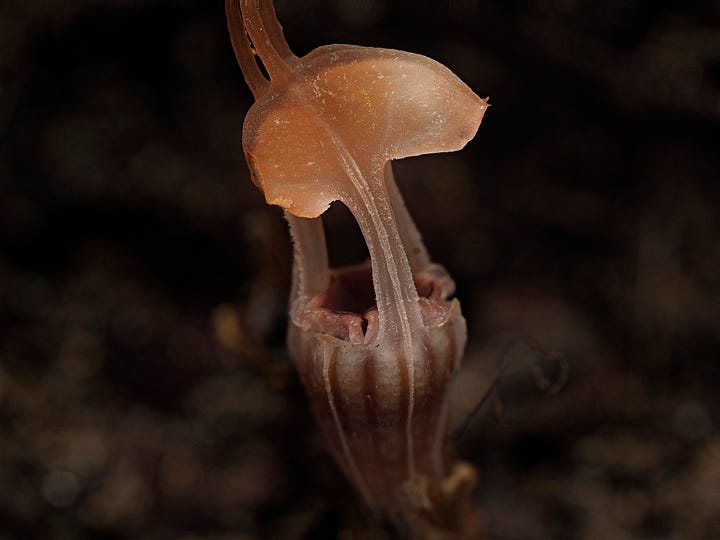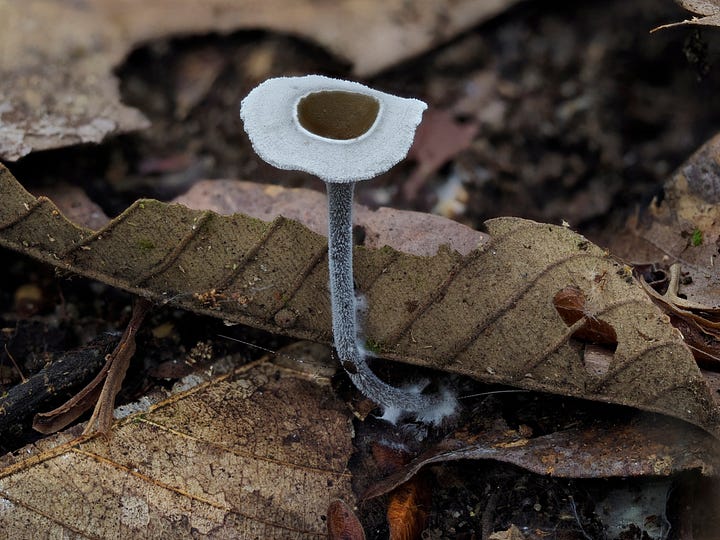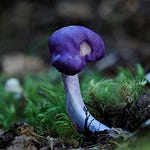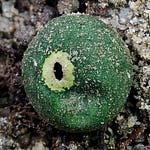Nearly five years ago, when I lived in New Zealand, I first encountered images of a plant called the "fairy lantern." Thismia species, like other myco-heterotrophs, form a unique relationship with fungi.
These plants don’t photosynthesize or rely on sunlight; instead, they extract nutrients by parasitizing the mycelium of fungi, which in turn get their nutrients from nearby trees. Essentially, Thismia taps into the fungal network, indirectly stealing nutrients from plants through the fungi’s symbiotic relationship with them.
Since then, this cryptic myco-heterotroph has been on my radar. I finally had the chance to witness this fascinating species in person. Their otherworldly appearance is striking, almost reminiscent of tiny aliens.





This would be the first, but not the only Thismia sp. I would encounter. Another trip out to Sungai Congkak with friends allowed me to see another kind. The recently described Thismia selangorensis discovered by Gim Siew Tan.


One of the other interesting finds of the day included a mint-condition Praearthromyces corneri. I’ve seen them only a few times before at Wawasan and Setia Alam Community Forest, but never in this condition.
They’re typically found near termite mounds and have a long pseudorhiza (rooting stipe) attached to insect pellets. The asexual spores on the cap fill a concave portion, which is chocolate brown, and the more mature spores turn gray or white.




This species was also featured on iNaturalist’s Observation of the Day by my friend and photographer Gim Siew Tan.
Before the clouds darkened and the rain came, we managed to find some species along the stream before calling it a day.
Given the height of the rainy season, many forest parks are closing for a couple of months due to the risk of landslides and trail flooding. I was lucky enough to visit this spot, but I look forward to returning to see what else I can find.
















